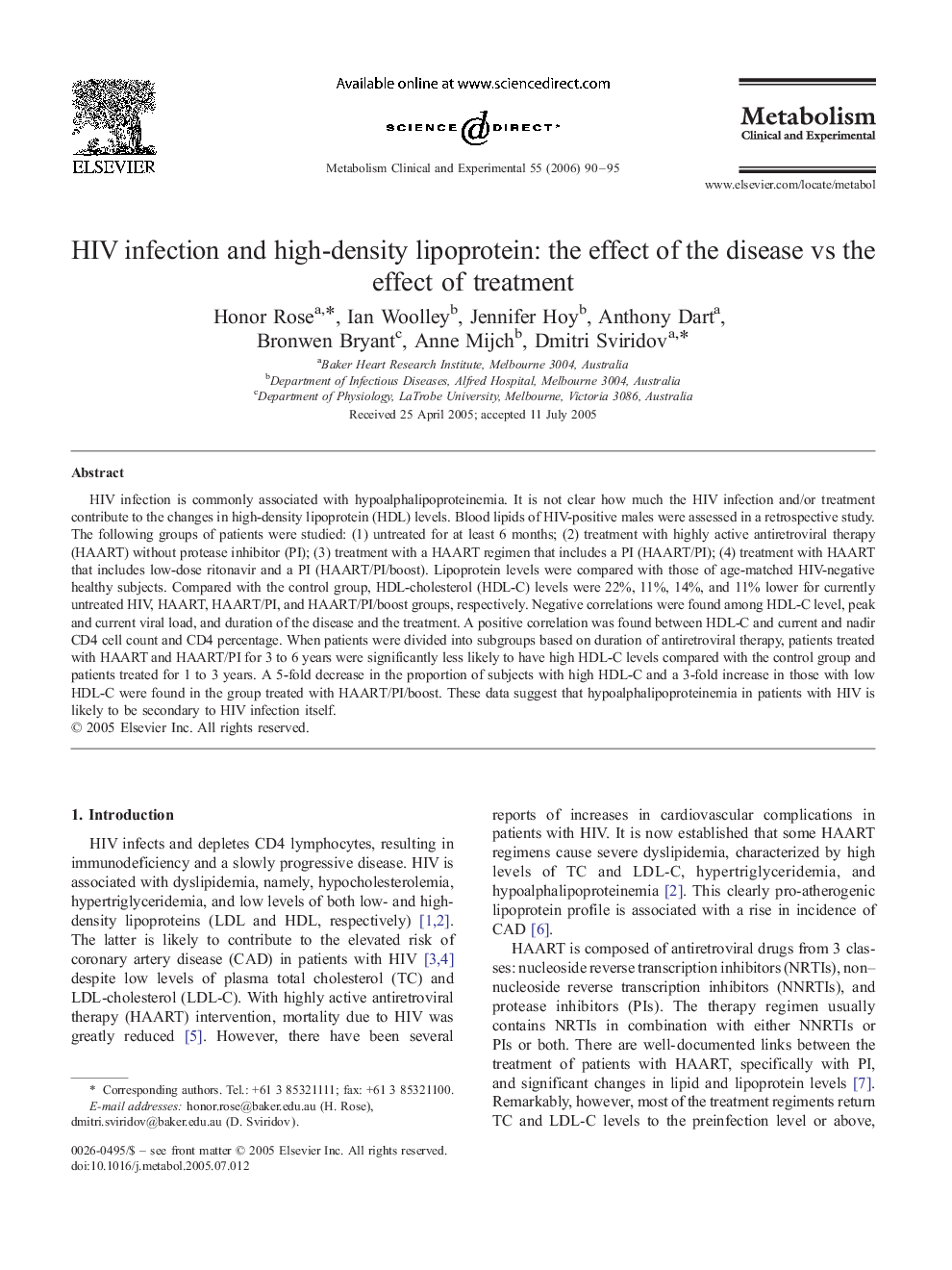| Article ID | Journal | Published Year | Pages | File Type |
|---|---|---|---|---|
| 2806980 | Metabolism | 2006 | 6 Pages |
HIV infection is commonly associated with hypoalphalipoproteinemia. It is not clear how much the HIV infection and/or treatment contribute to the changes in high-density lipoprotein (HDL) levels. Blood lipids of HIV-positive males were assessed in a retrospective study. The following groups of patients were studied: (1) untreated for at least 6 months; (2) treatment with highly active antiretroviral therapy (HAART) without protease inhibitor (PI); (3) treatment with a HAART regimen that includes a PI (HAART/PI); (4) treatment with HAART that includes low-dose ritonavir and a PI (HAART/PI/boost). Lipoprotein levels were compared with those of age-matched HIV-negative healthy subjects. Compared with the control group, HDL-cholesterol (HDL-C) levels were 22%, 11%, 14%, and 11% lower for currently untreated HIV, HAART, HAART/PI, and HAART/PI/boost groups, respectively. Negative correlations were found among HDL-C level, peak and current viral load, and duration of the disease and the treatment. A positive correlation was found between HDL-C and current and nadir CD4 cell count and CD4 percentage. When patients were divided into subgroups based on duration of antiretroviral therapy, patients treated with HAART and HAART/PI for 3 to 6 years were significantly less likely to have high HDL-C levels compared with the control group and patients treated for 1 to 3 years. A 5-fold decrease in the proportion of subjects with high HDL-C and a 3-fold increase in those with low HDL-C were found in the group treated with HAART/PI/boost. These data suggest that hypoalphalipoproteinemia in patients with HIV is likely to be secondary to HIV infection itself.
